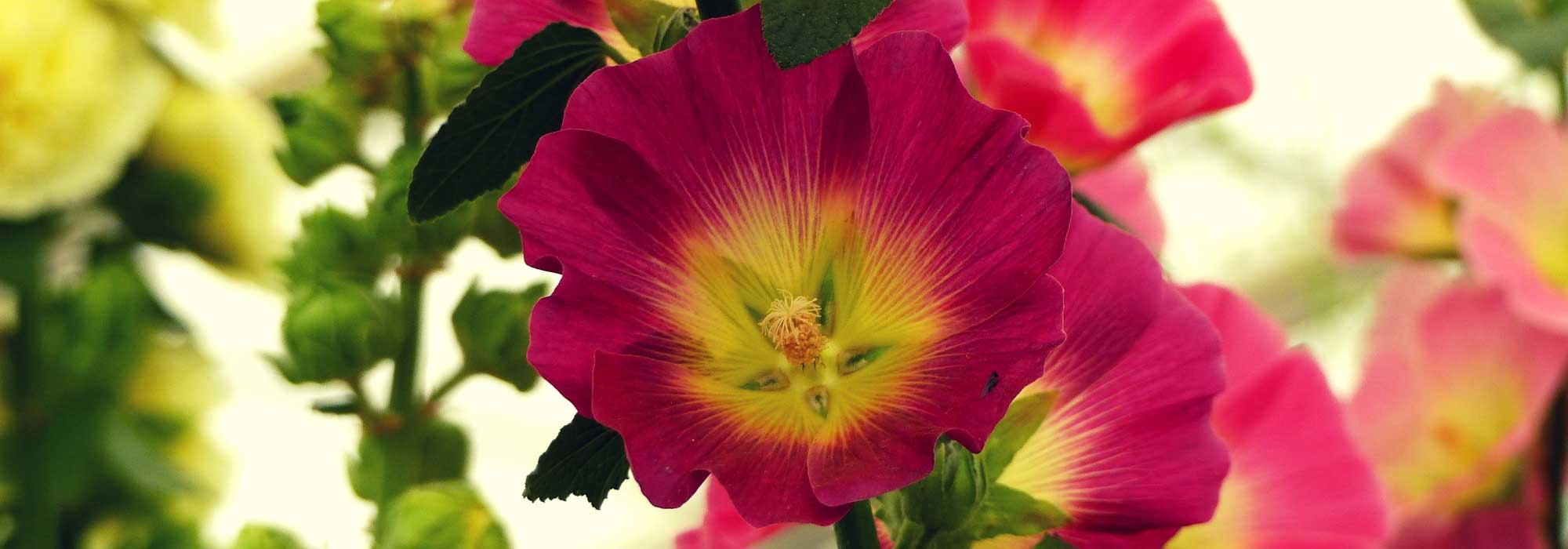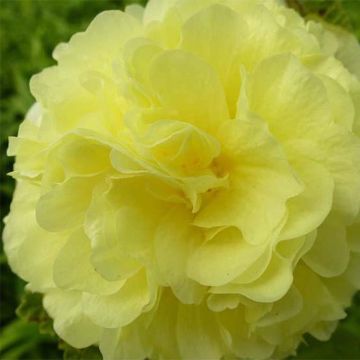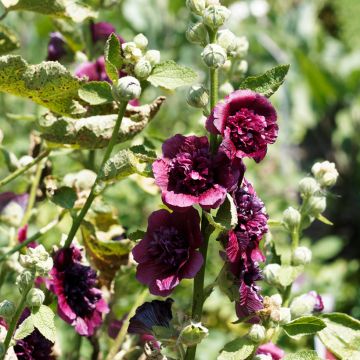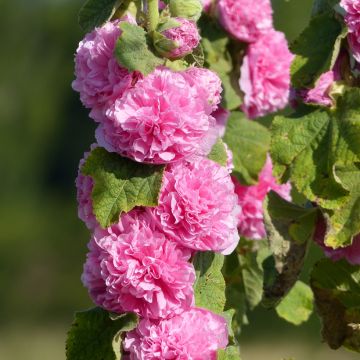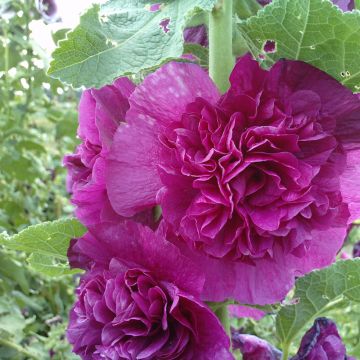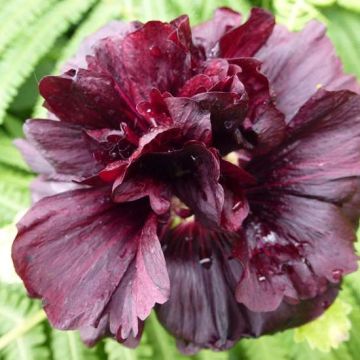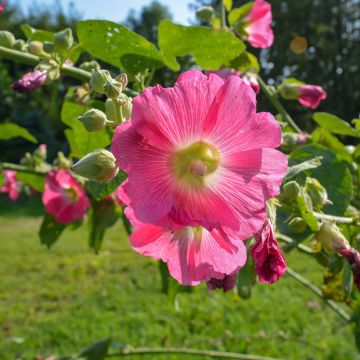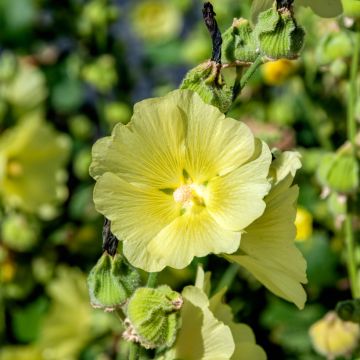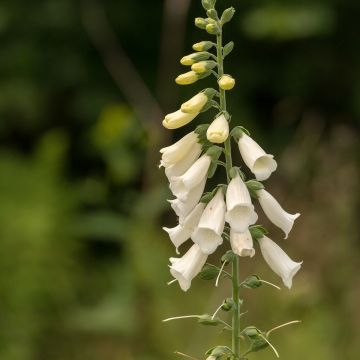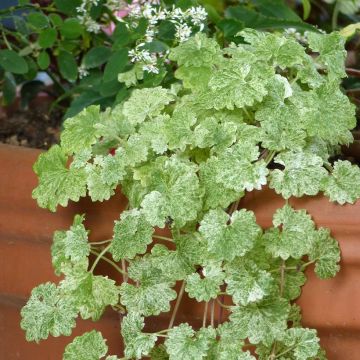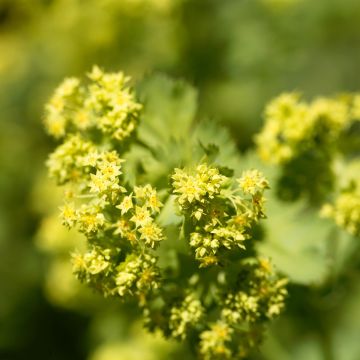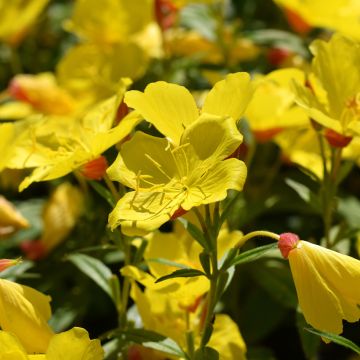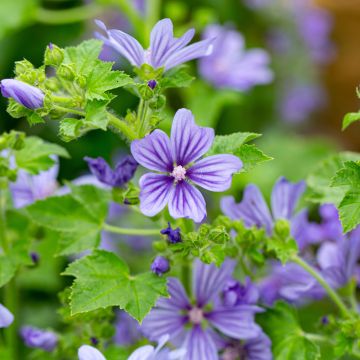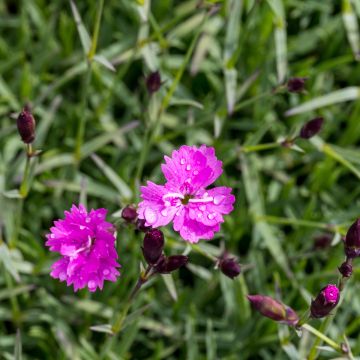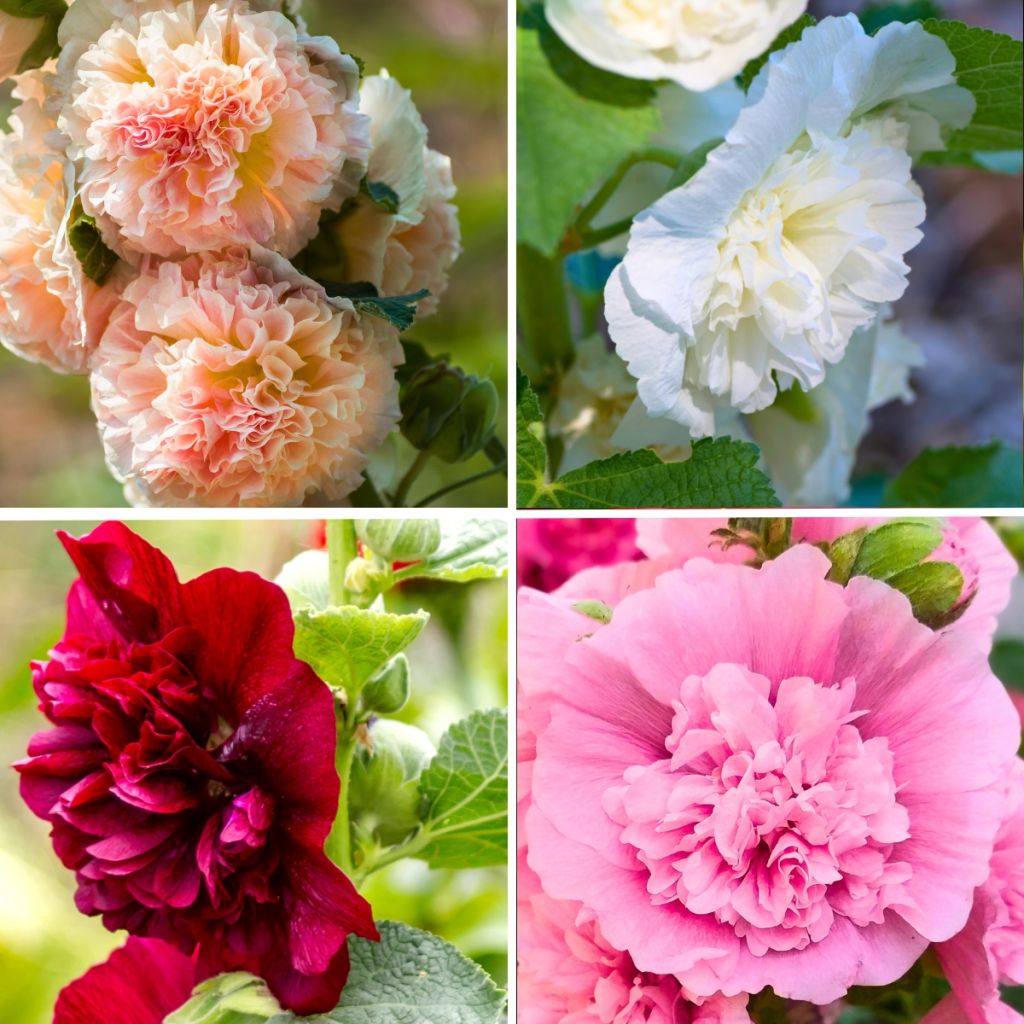

Alcea rosea Chater's Double - Double Hollyhock collection
Alcea rosea Chater's Double - Double Hollyhock collection
Alcea rosea Chater's Double Blanc, Rose, Rouge, Saumon
Hollyhock
Special offer!
Receive a €20 voucher for any order over €90 (excluding delivery costs, credit notes, and plastic-free options)!
1- Add your favorite plants to your cart.
2- Once you have reached €90, confirm your order (you can even choose the delivery date!).
3- As soon as your order is shipped, you will receive an email containing your voucher code, valid for 3 months (90 days).
Your voucher is unique and can only be used once, for any order with a minimum value of €20, excluding delivery costs.
Can be combined with other current offers, non-divisible and non-refundable.
Home or relay delivery (depending on size and destination)
Schedule delivery date,
and select date in basket
This plant carries a 12 months recovery warranty
More information
We guarantee the quality of our plants for a full growing cycle, and will replace at our expense any plant that fails to recover under normal climatic and planting conditions.
Would this plant suit my garden?
Set up your Plantfit profile →
Collection items (4 plants)
Description
This collection of Double Hollyhocks showcases 4 varieties of Alcea Chater's Double, renowned for their large pompon flowers, in an exceptional colour palette ranging from pure white to soft salmon, as well as pink and red. Blooming abundantly from June to August-September, they thrive in rich, well-drained soils and require a sunny, sheltered location to reach their full potential. More perennial in the south, they prove to be short-lived in cooler climates, where they are often grown as biennials that readily self-seed wherever they please.
This collection consists of:
1 x Alcea Chater's Double White: a variety with pure white flowers, reaching heights of up to 2.5 m.
1 x Alcea Chater's Double Pink: double flowers in a tender pink shade, reaching a height of approximately 2 m.
1 x Alcea Chater's Double Red: this variety stands out with its double flowers in a flamboyant red. It can reach a height of 2.2 m.
1 x Alcea Chater's Double Salmon: its double flowers in a delicate salmon shade offer an elegant and subtle alternative to the other more colourful varieties. It reaches a height of about 2 m.
For abundant flowers, plant Chater's Double Hollyhocks in spring or autumn, in rich, well-drained soil, even limestone. Choose a very sunny location, ideally at the back of a border or along a fence to showcase their tall stature. For the best effect, plant them in groups of three or more, with a minimum distance of 60 cm between each plant. This will allow each Hollyhock enough space to fully develop.
The Alcea rosea Chater's Double in this collection pair well with plants that also enjoy full sun and well-drained soil. Tall Verbascums such as 'Southern Charm' with pastel hues and the Phlomoides Mullein 'Spica' with white flower spikes complement the colour palette of the Hollyhocks. Yarrows, especially the varieties 'Terracotta' with shades ranging from orange to pale yellow and 'Paprika' with red flowers, provide a harmonious colour complement. Their flat umbels contrast with the tall habit of the Hollyhocks and Verbascums. Salvia nemorosa 'Caradonna' with its deep violet-blue flowers enriches the colour palette while encouraging pollinators. Together, these plants contribute to creating a garden rich in colours and textures, without requiring much maintenance.
Flowering
Foliage
Plant habit
Botanical data
Alcea
rosea
Chater's Double Blanc, Rose, Rouge, Saumon
Malvaceae
Hollyhock
Cultivar or hybrid
Other Alcea rosea - Hollyhocks
View all →Planting and care
Hollyhocks appreciate warm, sheltered positions and sunshine, and can tolerate ordinary soil, even clay, limestone, poor or stony soil. These plants with taproots do not appreciate being transplanted when they are too developed. Care must be taken not to break this taproot during handling. The rosea species is resistant to drought. It is hardy but is susceptible to slugs and particularly sensitive to rust. Excessive moisture should be avoided.
Planting period
Intended location
Care
Planting & care advice
This item has not been reviewed yet - be the first to leave a review about it.
Similar products
Haven't found what you were looking for?
Hardiness is the lowest winter temperature a plant can endure without suffering serious damage or even dying. However, hardiness is affected by location (a sheltered area, such as a patio), protection (winter cover) and soil type (hardiness is improved by well-drained soil).

Photo Sharing Terms & Conditions
In order to encourage gardeners to interact and share their experiences, Promesse de fleurs offers various media enabling content to be uploaded onto its Site - in particular via the ‘Photo sharing’ module.
The User agrees to refrain from:
- Posting any content that is illegal, prejudicial, insulting, racist, inciteful to hatred, revisionist, contrary to public decency, that infringes on privacy or on the privacy rights of third parties, in particular the publicity rights of persons and goods, intellectual property rights, or the right to privacy.
- Submitting content on behalf of a third party;
- Impersonate the identity of a third party and/or publish any personal information about a third party;
In general, the User undertakes to refrain from any unethical behaviour.
All Content (in particular text, comments, files, images, photos, videos, creative works, etc.), which may be subject to property or intellectual property rights, image or other private rights, shall remain the property of the User, subject to the limited rights granted by the terms of the licence granted by Promesse de fleurs as stated below. Users are at liberty to publish or not to publish such Content on the Site, notably via the ‘Photo Sharing’ facility, and accept that this Content shall be made public and freely accessible, notably on the Internet.
Users further acknowledge, undertake to have ,and guarantee that they hold all necessary rights and permissions to publish such material on the Site, in particular with regard to the legislation in force pertaining to any privacy, property, intellectual property, image, or contractual rights, or rights of any other nature. By publishing such Content on the Site, Users acknowledge accepting full liability as publishers of the Content within the meaning of the law, and grant Promesse de fleurs, free of charge, an inclusive, worldwide licence for the said Content for the entire duration of its publication, including all reproduction, representation, up/downloading, displaying, performing, transmission, and storage rights.
Users also grant permission for their name to be linked to the Content and accept that this link may not always be made available.
By engaging in posting material, Users consent to their Content becoming automatically accessible on the Internet, in particular on other sites and/or blogs and/or web pages of the Promesse de fleurs site, including in particular social pages and the Promesse de fleurs catalogue.
Users may secure the removal of entrusted content free of charge by issuing a simple request via our contact form.
The flowering period indicated on our website applies to countries and regions located in USDA zone 8 (France, the United Kingdom, Ireland, the Netherlands, etc.)
It will vary according to where you live:
- In zones 9 to 10 (Italy, Spain, Greece, etc.), flowering will occur about 2 to 4 weeks earlier.
- In zones 6 to 7 (Germany, Poland, Slovenia, and lower mountainous regions), flowering will be delayed by 2 to 3 weeks.
- In zone 5 (Central Europe, Scandinavia), blooming will be delayed by 3 to 5 weeks.
In temperate climates, pruning of spring-flowering shrubs (forsythia, spireas, etc.) should be done just after flowering.
Pruning of summer-flowering shrubs (Indian Lilac, Perovskia, etc.) can be done in winter or spring.
In cold regions as well as with frost-sensitive plants, avoid pruning too early when severe frosts may still occur.
The planting period indicated on our website applies to countries and regions located in USDA zone 8 (France, United Kingdom, Ireland, Netherlands).
It will vary according to where you live:
- In Mediterranean zones (Marseille, Madrid, Milan, etc.), autumn and winter are the best planting periods.
- In continental zones (Strasbourg, Munich, Vienna, etc.), delay planting by 2 to 3 weeks in spring and bring it forward by 2 to 4 weeks in autumn.
- In mountainous regions (the Alps, Pyrenees, Carpathians, etc.), it is best to plant in late spring (May-June) or late summer (August-September).
The harvesting period indicated on our website applies to countries and regions in USDA zone 8 (France, England, Ireland, the Netherlands).
In colder areas (Scandinavia, Poland, Austria...) fruit and vegetable harvests are likely to be delayed by 3-4 weeks.
In warmer areas (Italy, Spain, Greece, etc.), harvesting will probably take place earlier, depending on weather conditions.
The sowing periods indicated on our website apply to countries and regions within USDA Zone 8 (France, UK, Ireland, Netherlands).
In colder areas (Scandinavia, Poland, Austria...), delay any outdoor sowing by 3-4 weeks, or sow under glass.
In warmer climes (Italy, Spain, Greece, etc.), bring outdoor sowing forward by a few weeks.


































